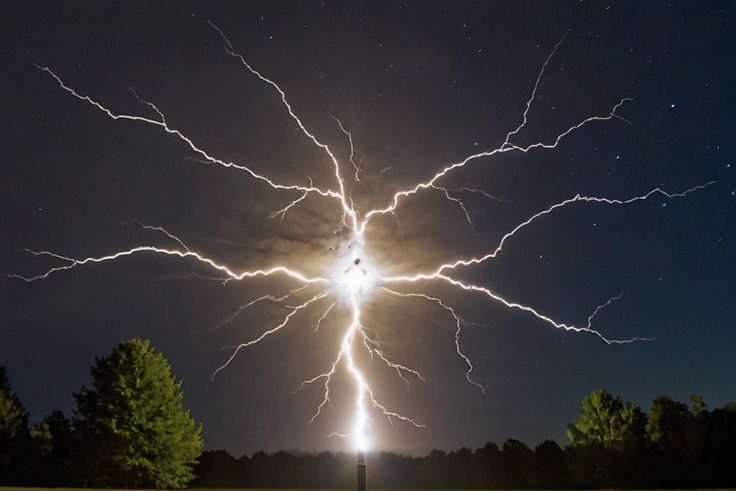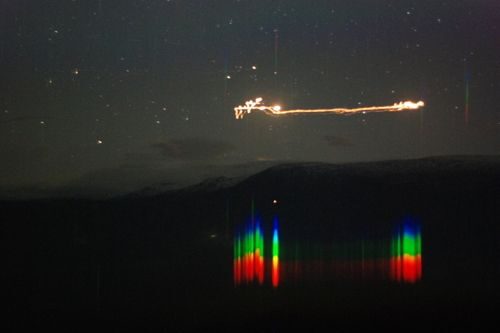1. Ball Lightning

It sounds like something out of a superhero movie, but ball lightning is very real, and very bizarre. These glowing orbs of electric light have been reported for centuries, appearing during thunderstorms and often floating eerily before vanishing or exploding. They can enter homes through windows, pass through walls, and last for several seconds, behaving in ways that defy the known laws of physics.
Despite numerous eyewitness accounts, including pilots and scientists, researchers still haven’t been able to reliably recreate ball lightning in a lab. Theories range from plasma formations to microwave interference in thunderstorms. Some evidence, including high-speed footage and electromagnetic readings, supports these ideas, but a solid explanation remains elusive. This phenomenon continues to be studied worldwide, including at institutions like MIT and Chinese research labs.
2. The Hum
Imagine lying in bed at night and hearing a low, rumbling hum that won’t go away, yet no one else seems to hear it. That’s the reality for thousands of people around the world who experience what’s simply known as “The Hum.” This deep, droning sound is reported in places like Taos, New Mexico, and Bristol, England, and no single cause has ever been confirmed. It doesn’t appear on standard audio recordings, making it even more mysterious and frustrating for those affected.
Scientists have proposed everything from low-frequency electromagnetic radiation to industrial machinery as potential sources, but nothing sticks. Some even believe it could be linked to inner ear issues or heightened auditory perception. Whatever the reason, the phenomenon is very real for those who hear it, and its global reach continues to baffle researchers.
3. Earth’s Mysterious “Skyquakes”
You’re sitting at home when a sudden, loud boom shakes the walls, but there’s no earthquake or explosion in sight. Welcome to the baffling world of skyquakes. These unexplained loud noises, sometimes called “barisal guns” or “Seneca guns”, have startled coastal communities for decades. They sound like cannon fire, sonic booms, or even thunder, yet leave no physical trace behind.
Scientists have floated various theories, including distant thunder bouncing off atmospheric layers, gas escaping from underwater caves, or small meteors breaking the sound barrier. But none of these fully explain the patterns or consistency of the reports, especially in areas where they’ve been heard for centuries. NASA and the US Geological Survey have investigated several incidents, but there’s still no solid conclusion.
4. The Sailing Stones of Death Valley
In California’s Death Valley, massive rocks weighing up to 700 pounds have been found trailing across the dry desert floor, leaving long tracks in the cracked earth. For decades, no one could figure out how they moved. There were no signs of human or animal interference, and the rocks were often found hundreds of feet from their original positions.
It wasn’t until 2014 that researchers using GPS trackers and time-lapse photography finally caught the rocks in motion. They found that under rare conditions, a thin layer of ice forms overnight, and when it melts just enough, wind can push the rocks slowly across the slippery surface. Even with this breakthrough, the phenomenon is so rare and specific that it’s still one of the most mysterious natural events in the U.S.
5. The Taos Hum
Taos, New Mexico has its own version of “The Hum,” and it’s so well-known that it prompted a full-scale scientific investigation by the U.S. government in the 1990s. About 2% of the population reports hearing a low, consistent rumbling sound with no apparent source. Some locals say it interferes with sleep and concentration, while others are completely unaware of it.
The investigation included sound level tests, mapping, and interviews, but the results were inconclusive. No consistent frequency was found, and no mechanical or environmental source could be pinpointed. Scientists have speculated that the hum may be internal, perhaps related to otoacoustic emissions or neural activity. Still, the fact that people in specific geographic areas are more likely to hear it keeps the mystery alive.
6. The Hessdalen Lights

In a quiet valley in central Norway, strange balls of light have been appearing in the sky for decades. These glowing orbs, sometimes white, sometimes red or yellow, hover, dart, or float slowly across the night sky in Hessdalen. Unlike UFO sightings that happen once in a blue moon, these lights show up often enough that scientists have set up a permanent observation station there.
Researchers have ruled out planes, satellites, and common atmospheric phenomena, but a solid explanation still hasn’t landed. Some theories suggest plasma caused by natural radioactivity in the rocks, while others lean toward piezoelectric effects from quartz under pressure. The lights have even inspired collaborations between Norwegian scientists and engineers from Italy and Japan. Despite the high-tech monitoring, the mystery is still very much alive, and it continues to draw curious travelers and skywatchers alike.
7. The Upsweep Sound
Deep beneath the Pacific Ocean, hydrophones picked up something eerie in 1991: a rising and falling sound now known as “Upsweep.” Captured by the U.S. National Oceanic and Atmospheric Administration (NOAA), this unexplained underwater noise has been echoing in the ocean ever since, usually during spring and fall. It’s loud enough to be heard across the Pacific, but its source has never been pinpointed.
Some scientists think the sound could be caused by underwater volcanic activity, possibly linked to geothermal vents. But without visual confirmation or a regular pattern, it’s all speculation. What’s even stranger is that the sound has decreased in intensity over the years, which might hint at a natural origin that’s fading. Still, its origin remains one of NOAA’s great sonic mysteries. The ocean may be vast, but the Upsweep keeps it feeling downright spooky.
8. Blood Falls in Antarctica
In one of the coldest, driest places on Earth, there’s a waterfall that bleeds red from the ice. Known as “Blood Falls,” this crimson stream flows from the Taylor Glacier in Antarctica and stains the white ice in a haunting display. Scientists initially thought red algae were responsible, but the truth turned out to be even more fascinating, and confusing.
The color comes from iron-rich brine that oxidizes like rust when it hits the air. What really baffles scientists, though, is how this salty, iron-filled liquid has remained flowing from a subglacial reservoir for millions of years without freezing solid. The liquid flows despite extreme conditions that would usually halt water movement completely. Even now, research is ongoing to understand how this system functions, and it might even hold clues to life on icy moons like Europa. Antarctica still has its secrets.
9. Catatumbo Lightning
Over Lake Maracaibo in Venezuela, lightning strikes so often it looks like a nightly fireworks show. Known as Catatumbo Lightning, this weather phenomenon can occur up to 260 nights a year, lasting for up to 10 hours at a time. The lightning flashes silently high above the lake and surrounding mountains, producing as many as 280 strikes per hour. It’s so consistent that it’s been called the world’s most powerful lightning storm.
Scientists have proposed a few explanations, including the unique geography of the region, where warm lake air meets cool mountain breezes. There’s also a theory about methane from nearby swamps contributing to the electrical activity. But no single explanation has nailed down why the lightning is so intense and persistent in just this one area. It remains a literal flash of mystery in the sky, and an awe-inspiring reminder that nature plays by its own rules.
10. Fairy Circles in the Namib Desert

Dotting the desert landscapes of Namibia are thousands of bare, circular patches of land known as fairy circles. These strange formations stretch for miles, are surprisingly uniform in size, and appear in oddly regular patterns. What’s more mysterious is that they’re surrounded by healthy vegetation, making them stand out like polka dots on a golden canvas.
Some researchers believe termites are to blame, as they’ve been found under several circles. Others argue the cause is more botanical, root competition among plants in dry environments. A 2020 study combined both theories, suggesting termites help modify the landscape, but water distribution and plant self-organization play roles too. Even with this, the phenomenon is still widely debated, and the mystery circles continue to spread, also recently appearing in Australia. Are they nature’s art project, or just one more puzzle we haven’t solved? Either way, they’re strange, striking, and still not fully understood.
